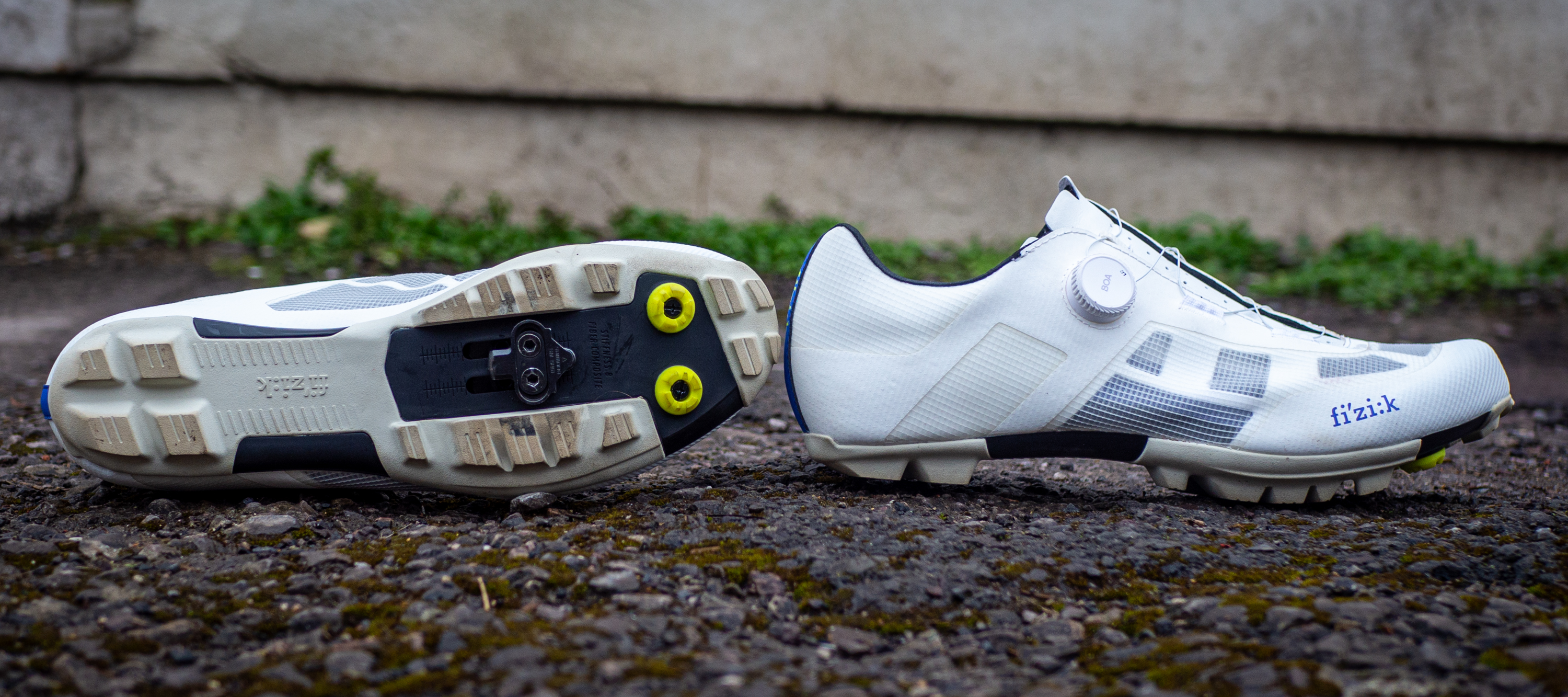Cyclingnews Verdict
A stunning-looking, well-rounded off-road shoe that's up to the task of racing, but the single Boa struggles to provide a secure fit and the white finish is hard to maintain
Pros
- +
Sole is grippy, so great for walking
- +
Genuinely some of the best-looking shoes out there
- +
Ventilation is excellent
- +
Comfortable
Cons
- -
It doesn't hold the foot very securely
- -
Retention cable gets sticky, doesn't spread load evenly without some faff
- -
The metatarsal button is protrusive
You can trust Cyclingnews
Intended Use: Gravel, CX, XC MTB
Seasons: Spring, Summer, Autumn
Price: £229.99 / $249.99 / €229.00
Weight: 380g per shoe (EU46)
Colours: Coral and purple / Sky blue and reflective / Light lilac and lime / Black / White
The Fizik Vento Proxy is a race-focused off-road shoe, with holes to accommodate a two-bolt cleat, a bold but stunning aesthetic and a single Boa dial closure.
It is aimed at riders seeking shoes for XC mountain biking, cyclo-cross racing, or fast gravel riding. It is also a potential candidate for inclusion in our guide to the best gravel shoes.
Positioned below the Vento Ferox in Fizik’s range, the Vento Proxy is considered a second-tier model and is priced accordingly at £229.99 / $249.99. It features a carbon-infused nylon sole, aiming to balance stiffness and comfort, with half an eye on price.
To see how they perform, both against their direct peers and more premium race-focused competitors, I've been using the Vento Proxy shoes for a little over two months now. I've worn them indoors and outdoors, for hard rides and easy rides, both on the gravel and on the road.
I even took them to Girona for the Santa Vall Gravel Earth Series race, where they were tested over two gruelling days of flat-out racing.
In short, their performance has left me impressed, but it hasn't been without a few faults.
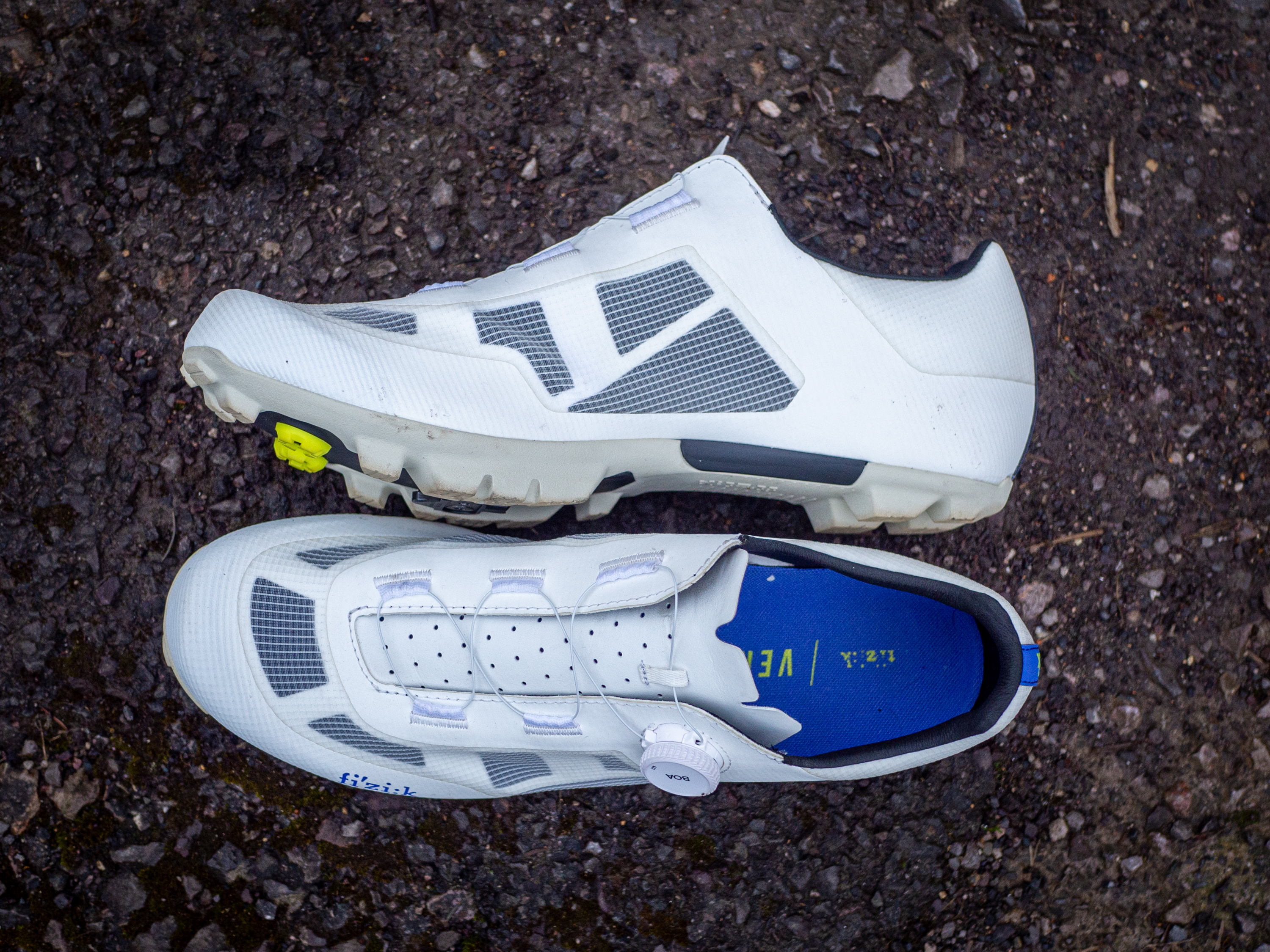
Design and specifications
The white on white colourway of the Fizik Vento Proxy may seem at odds with the off-road nature of their design, but as a gravel rider who has transitioned from the road, I absolutely love the aesthetic, and I suspect many of the thousands of cyclists making a similar switch will feel the same.
The latest race content, interviews, features, reviews and expert buying guides, direct to your inbox!
For those seeking a more practical option, a black-on-black version is available, while riders looking for something more vibrant can choose from 'coral and purple', 'sky blue and reflective' and new just this past few weeks, 'light lilac and lime' colourways.
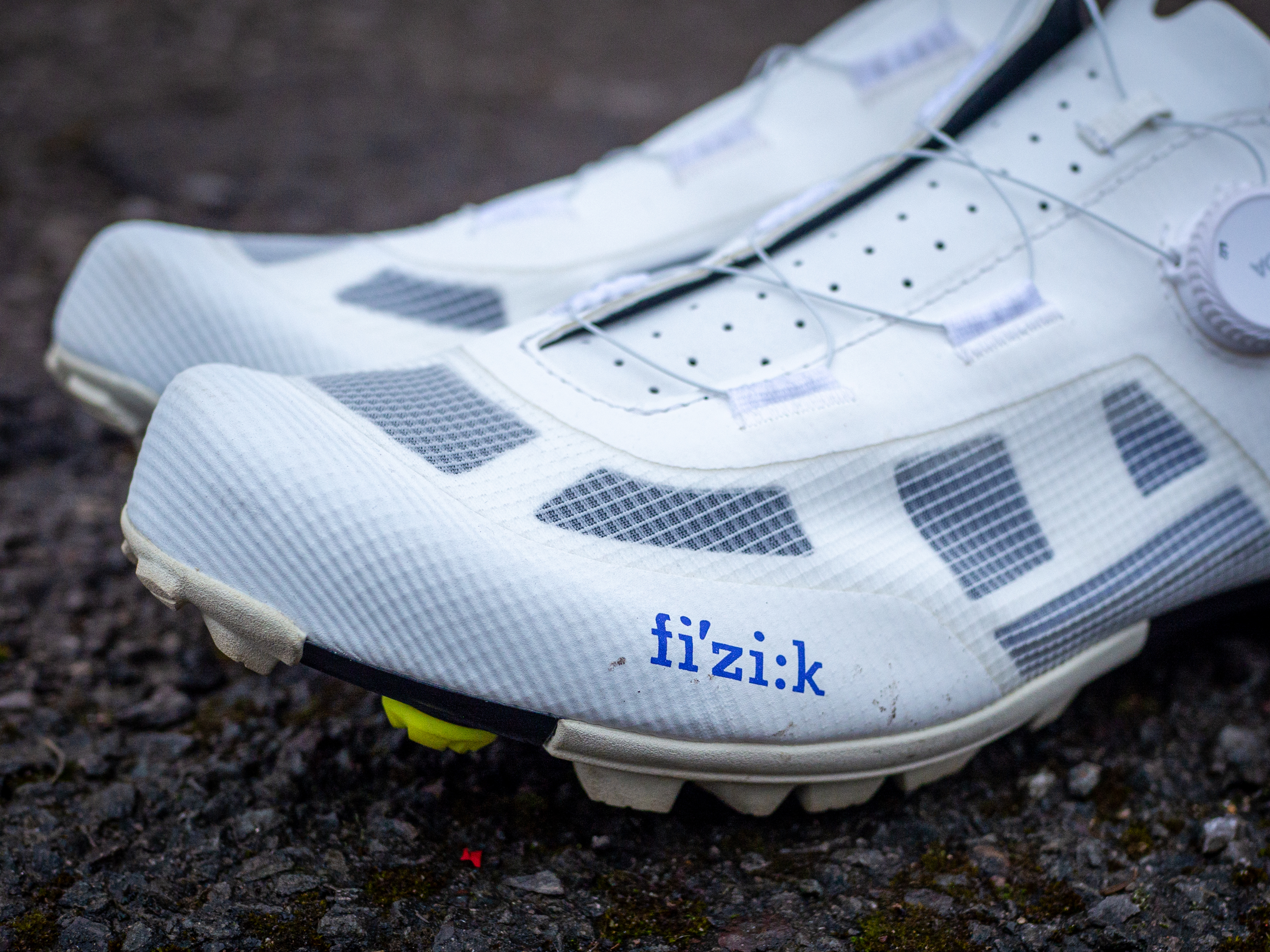
The upper is constructed from a multi-layer PU-laminated mesh, featuring translucent sections across the toe box, down the instep and along the outer edge. This contributes to both breathability and their distinctive look. The tongue is more solid and thicker in its construction, but includes small holes across its entirety to allow heat to escape. Beneath the insole, the base of the shoe is also dotted with holes presumably for a similar purpose. However, there's nowhere for this heat to then escape since aside from the two cleat holes, the outsole is otherwise solid in these areas.
The insole itself includes a notably pronounced metatarsal button, something which is oddly absent from the higher-end Vento Ferox. Riders familiar with Northwave shoes may recognise the feeling, which is essentially a raised bump beneath the metatarsals. This is designed to encourage toe splay, with the promise of providing a more stable platform for power transfer. While the logic is no doubt sound, it can take some getting used to.
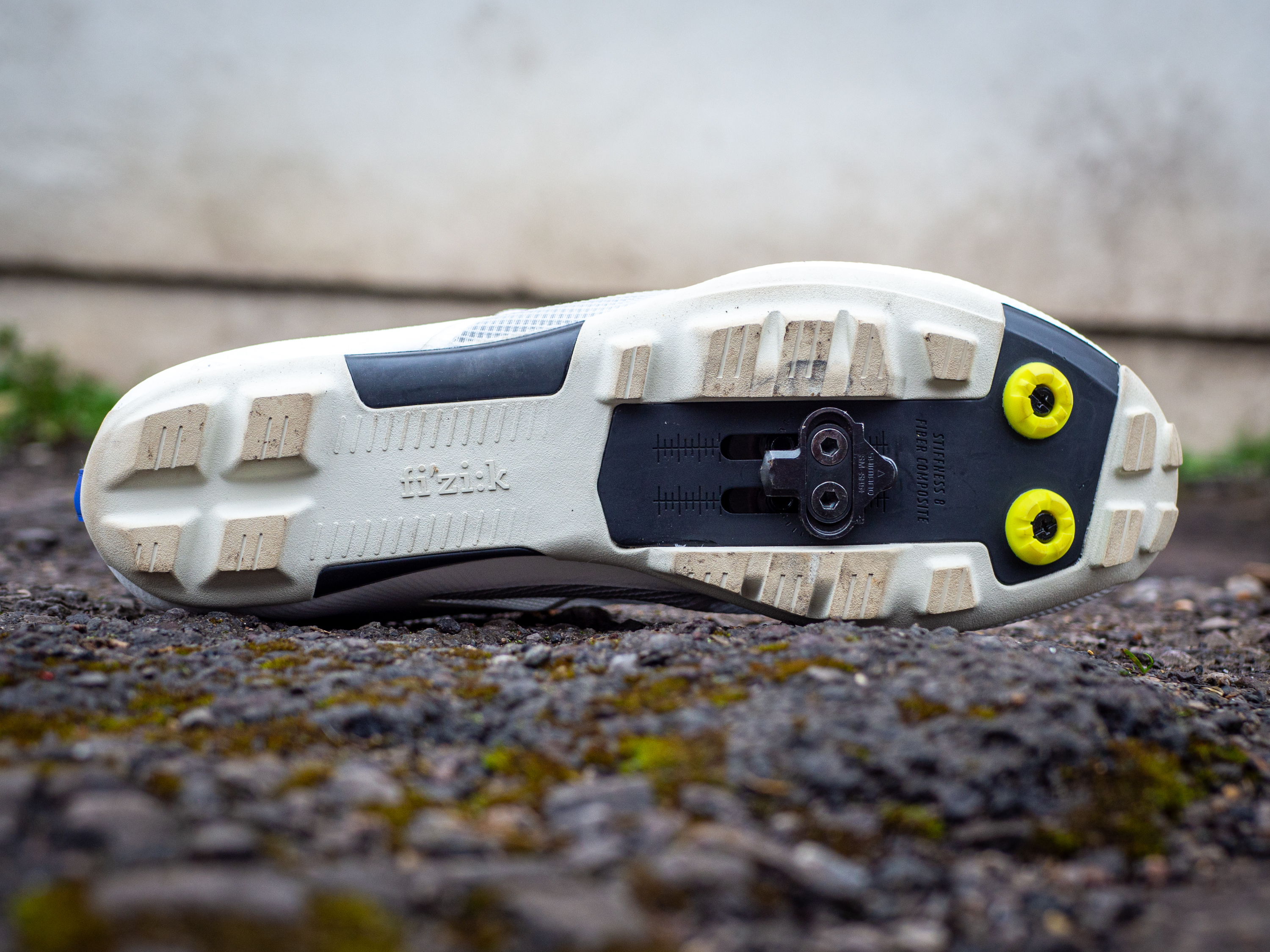
Within the cleat slots, the threaded insert allows for two mounting positions, and the entire unit can slide forwards and backwards to fine-tune cleat placement. Combined with the lateral adjustment built into most SPD cleats, there's plenty of adjustment for cleat positioning.
On either side of the cleat are two rubber lugs that protrude slightly beyond the cleat itself. This ensures the cleat is recessed enough to allow safe walking on hard surfaces, such as your kitchen tiles, without the cleat fouling and potentially damaging the floor.
A thin layer of rubber also protects the midfoot area, enhancing off-bike grip and stability. Whether scrambling up steep banks, as occurred during Santa Vall, or navigating unrideable woodland, which is all too common on the UK's so-called gravel terrain, the Proxys perform reliably.
All of that is built onto Fizik's X3 carbon-reinforced nylon outsole. While not a full carbon sole like those found on premium models, it remains race-oriented and far from flexible. It is slightly more pliable than the Vento Ferox, but this is only noticeable during direct back-to-back testing. Over extended rides, the Proxys never left me feeling as though I was losing power through sole flex.
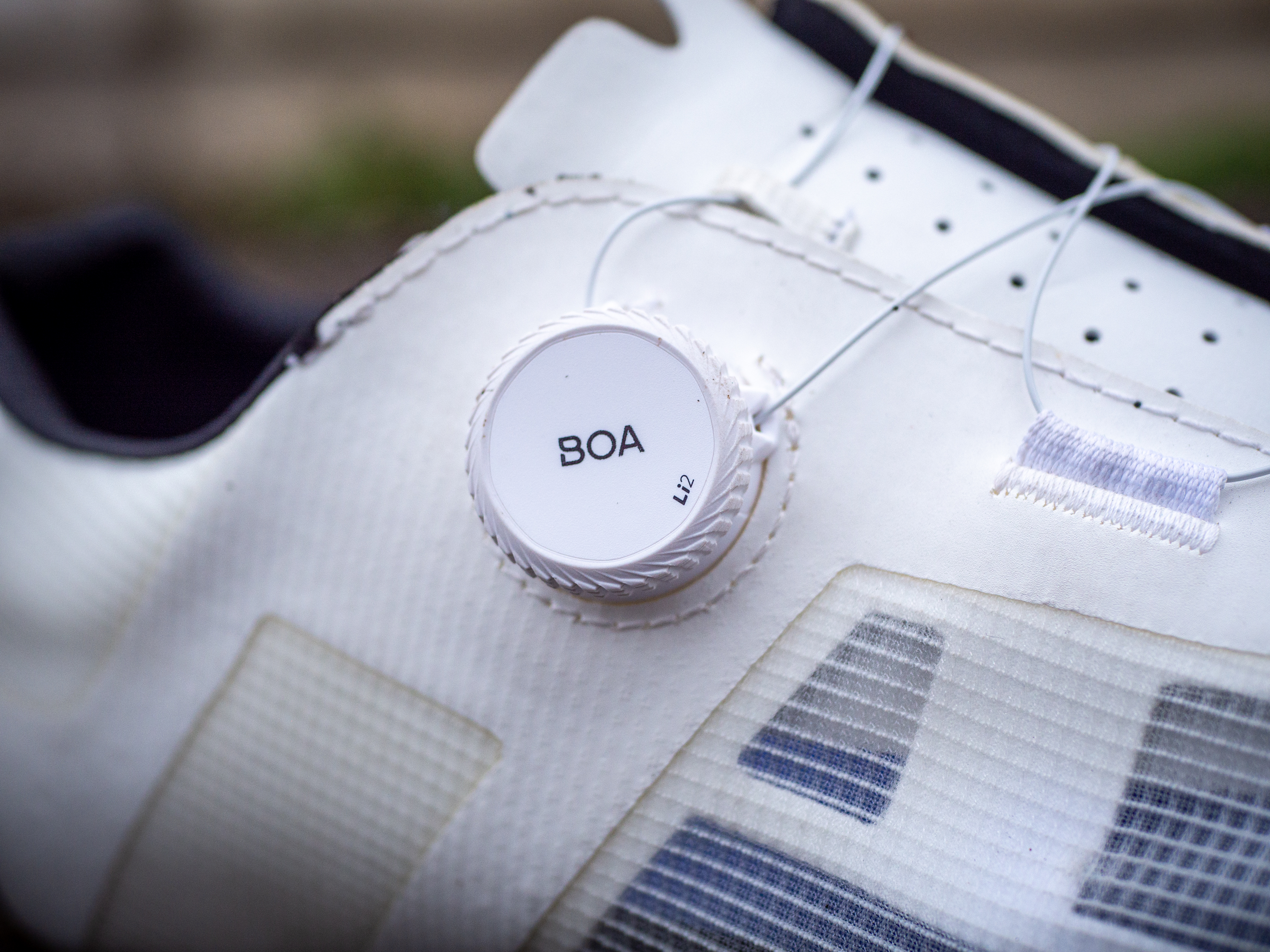
Another distinction from the Vento Ferox is the omission of the Velcro strap across the upper foot. Instead, a single Boa dial is used and sits on the outer edge toward the top of the shoe. The Vento Proxys feature the latest Boa Li2 dial, which tightens in one direction (reversed depending on the shoe) and loosens in the other, with a pop-up function to release tension entirely.
The cable travels across the forefoot through five fabric lace guides, each approximately 1.5cm in width. This setup can limit the cable’s movement, making it difficult to achieve a snug fit on the first attempt. It often requires tightening to the maximum, shifting your foot to redistribute the cable, and re-tightening.
Elsewhere, the Vento Proxy does not feature a rubberised bumper around the toe to protect against scuffs, but despite this, the upper material has been impressively durable. After two months of use, I was able to scrub the shoes with an abrasive sponge and they cleaned up well with no signs of peeling or damage, despite some fairly demanding riding conditions.
That said, toe bumpers serve a purpose beyond the aesthetics, and some impact protection for the toes would have been welcome. During the Santa Vall race, I toe-punted a rock kicked up by the rider ahead, and oh boy, did it hurt. Luckily, nothing was broken, but the added protection would have been nice.
Performance
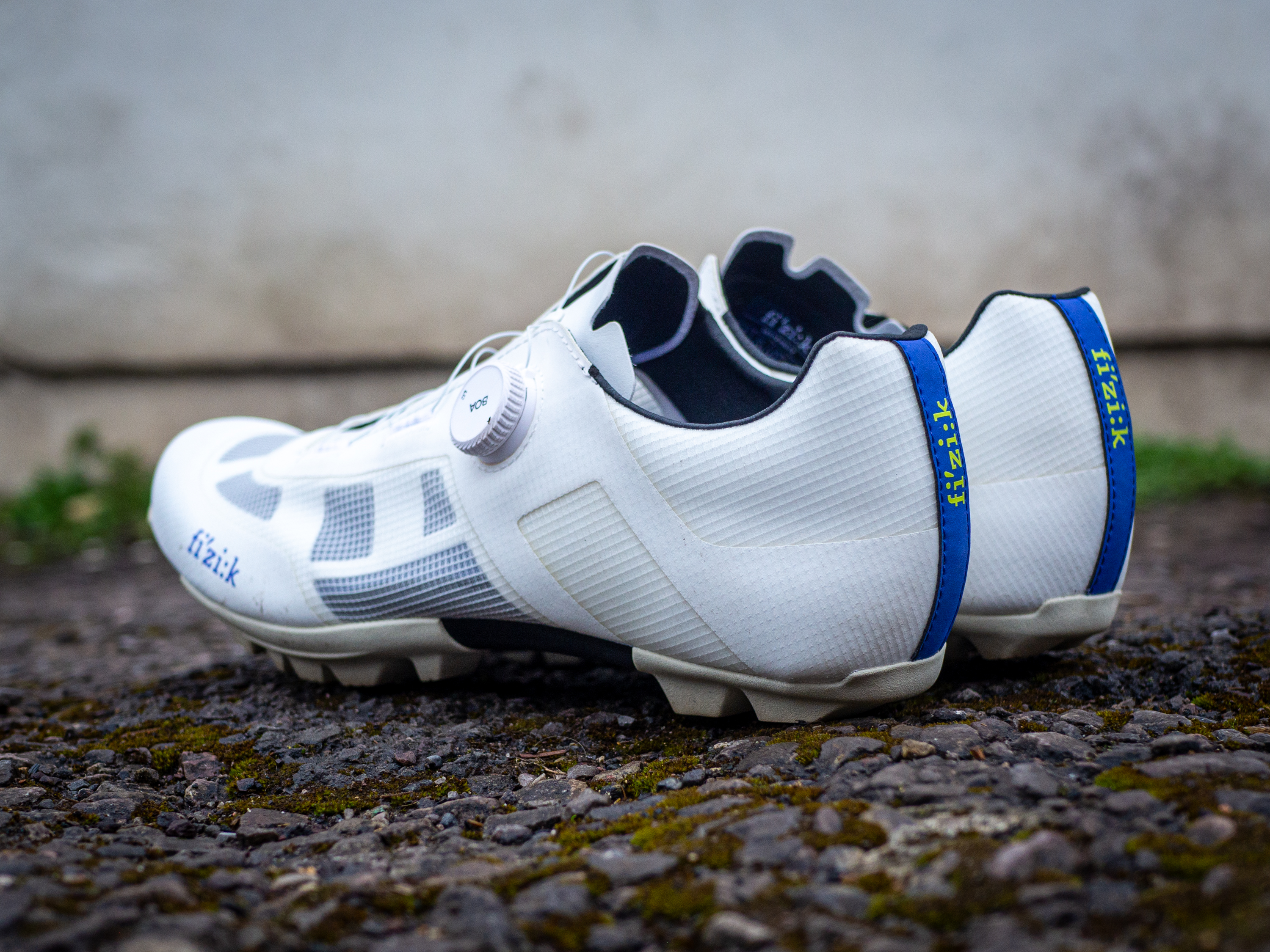
Overall, there's a lot to like about the Fizik Vento Proxy shoes, but they're not without issue.
The sole is plenty stiff enough for hard efforts, be they on the trainer indoors or in the real racing scenario of sprinting to a finish line. They're also more than comfortable enough for when those gravel races push into the three or four-hour mark. My longest ride so far in them is a road ride just shy of five hours, and I had no issues with comfort or hotspots.
But as I've touched on above, I struggled to get an even closure with the single Boa dial. At the start of each ride, I've taken to tightening them as hard as I can, then wiggling my foot around to work the cable through the guides, before tightening again to take up the new slack.
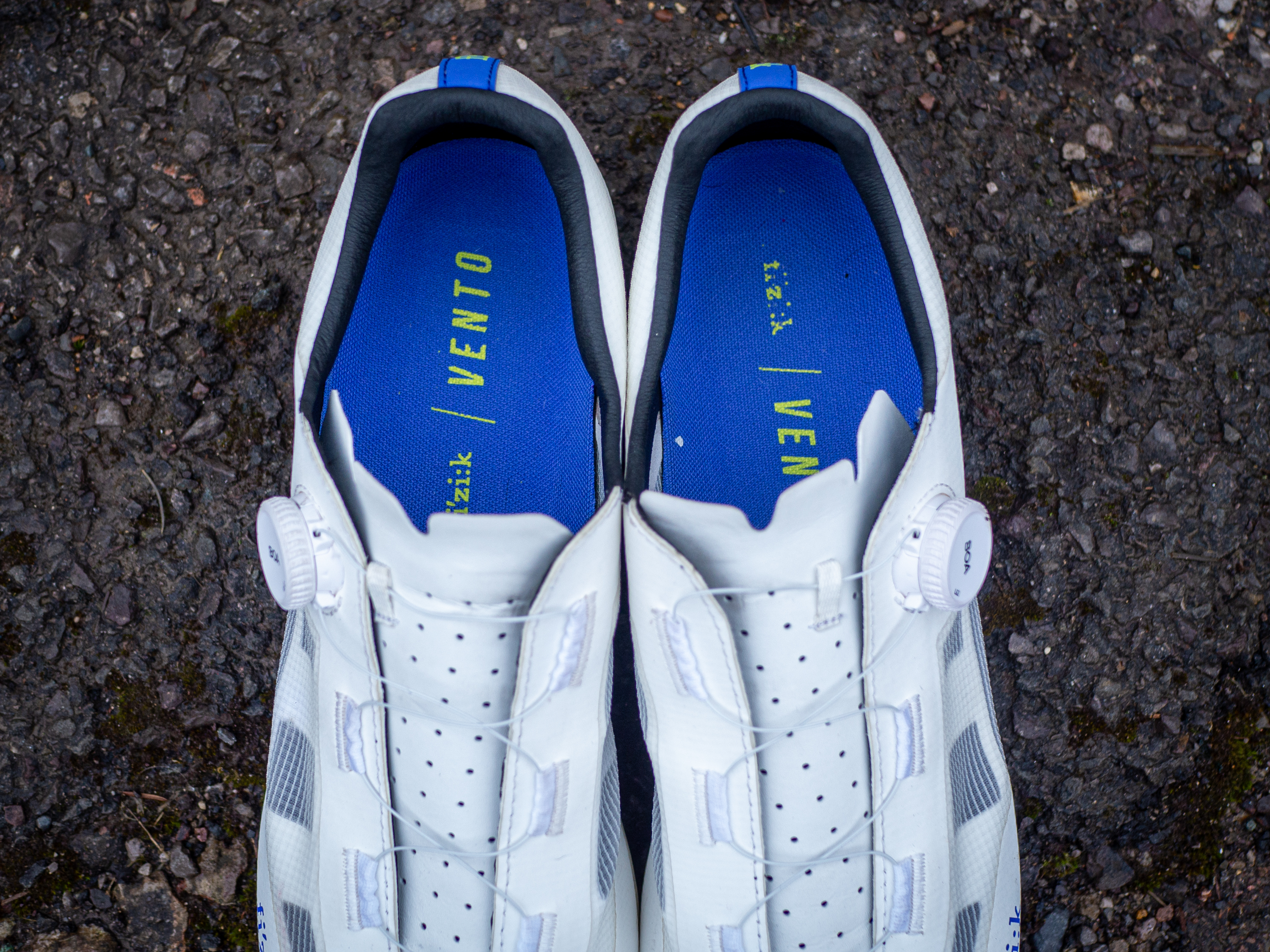
Even after this little dance, the security of how well they hold the foot could be improved, and I'm regularly forced to cinch them up double-tight before intervals to get the hold I want, before loosening them off again afterwards to ease the pinching that came at the ankle.
That's only been required during more VO2 max style efforts, though, and I've not found the need during steadier state efforts.
I also found the cable had a tendency to stick inside the Boa mechanism, making it difficult to release tension when removing the shoes. I often had to pull the cable itself to free it.
The metatarsal button on the insole is a small cause for contention. Its inclusion is founded in good science, but its execution is a little more pronounced than that of its competitors.
Specialized's Recon shoes employ a similar technology, but here on the Fizik, it's noticeable and borderline irritating, especially for those not used to it. It's not quite a feeling like something's stuck in your shoe, but a bit like your sock is creased beneath your foot, and it takes a few weeks' worth of use before you forget about it.
Elsewhere, they're obviously not designed to be a shoe you'll spend a lot of time walking in, but I've found them to be grippy, stable and comfortable enough when the need arises. The looser hold on the foot actually becomes a benefit here, allowing your foot to flex inside the shoe. This makes them a little more forgiving when running in cyclocross, or simply walking through the cafe without the awkwardness you sometimes get in stiffer shoes.
Perhaps unsurprisingly for a shoe covered in mesh panels, their breathability is excellent, albeit perhaps too good for British weather in February and March.
They're naturally not very waterproof as a result, but the shape of their lugs on the outsole means most road overshoes fit over them without issue. I've even paired them with aero overshoes on race days (from Spatz and Velotoze, respectively) and both held up well.
There's no denying their aesthetic is a real strong suit, especially when box fresh in this white-on-white colourway. Sadly, but predictably, keeping them clean has proven impossible.
The white outers clean up nicely, but those translucent sections have stained to a natural state of slightly brown.
In their defence, I have been wearing them in all conditions, including grimy, muddy woodlands here in the UK, but I can't imagine any gravel bike conditions where they'd finish as white as they started.
Even where the weather is dry, the trails will be dusty, and although the outer panels wipe clean nicely, those mesh panels capture dirt and hold onto it.
Value
Surprisingly, the Vento Proxy has relatively few direct competitors.
The Quoc Gran Tourer XC is perhaps its closest rival, priced slightly higher at £240 or $310. The Giro Sector, meanwhile, comes in marginally cheaper at £215 or $240. Both of those alternatives feature dual Boa dials, which I think will be a benefit, whereas the Vento Proxy only uses one. All three use a carbon composite sole, though, with rubber injection for grip along with breathable mesh panels in the uppers for improved ventilation.
Elsewhere in the market, Specialized's Recon ADV and Rapha's Explore are both at a similar price point, too, but are aimed at the adventure rider, leaving their respective carbon-soled high-spec stablemates to cater to the racers. This is the approach a lot of other brands have taken too.
With all that said, £229.00/ $249.00 is a fairly significant outlay for a pair of cycling shoes, and while they might not offer the same performance as the more premium race shoes when it comes to pedalling a bike hard, they are plenty capable in competitive situations while also being comfortable, easy to walk in, broadly adjustable in terms of fit, and excluding the white colourway, relatively easy to keep clean.
In that regard, they're a pretty good all-arounder that'll work well for a lot of riders, but bear in mind you'll want something else when the temperatures fall.
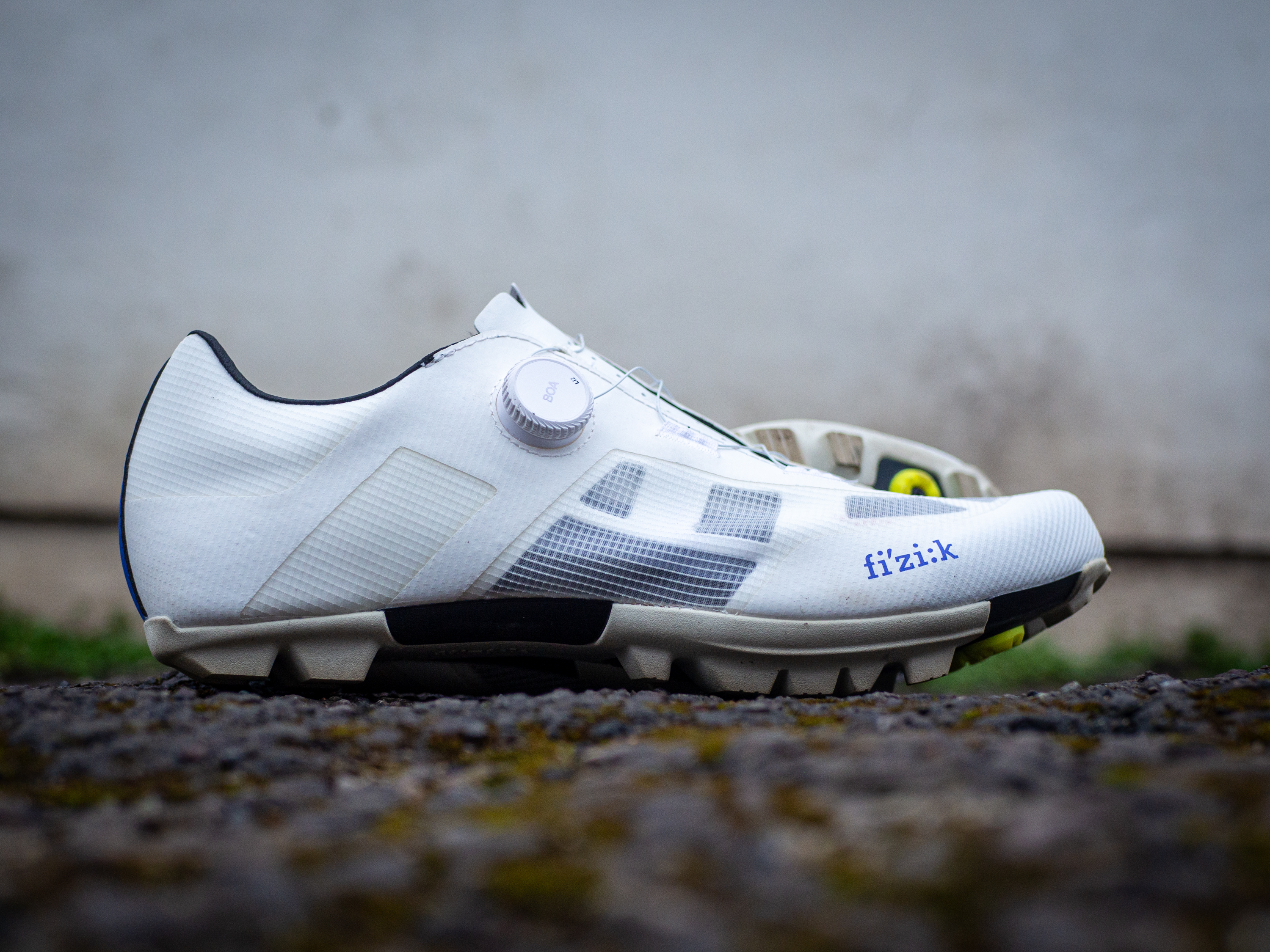
Verdict
The Fizik Vento Proxy is an eye-catching shoe that offers a great balance of comfort, performance and style.
Although the price is still pretty high, they're not a bad investment as an all-rounder shoe for someone who wants a single pair of shoes to ride in, train in, and race in across gravel, cyclocross and cross-country mountain biking.
Just bear in mind that their open, meshy construction means they're certainly more of a warm-weather shoe than an all-year option. If your riding takes you indoors when the weather turns nasty anyway, then these should be on your radar, but don't expect to keep them clean if you do brave wearing them in the mud.
| Design and aesthetics | Genuinely stunning shoes. I absolutely love the aesthetic here. The white and blue reminds me of David Beckham's white Adidas Predator football boots. Problem is they're really hard to keep clean. | 9/10 |
| Performance | As an all-rounder, they're fairly good. The walking grip and comfort is great, and the sole stiffness is more than enough. The foot hold could be improved though. | 8/10 |
| Comfort and retention | Comfort wise they're great, but that comes at the expense of retention, which is average. For harder efforts I need to overtighten them, which leads to pinchpoints. The cable also gets sticky inside the Boa dial. | 6/10 |
| Weight | At 380g per shoe, they're relatively competitive even against higher-spec race shoes, but they're not breaking any ground | 8/10 |
| Value | At £229 / $249, they're hardly a budget offering, but the performance as an all-rounder goes a long way to offer good value. They're not a year-round shoe though, so you'll need something else for winter if you want to ride outside. | 7/10 |
| Total | Row 5 - Cell 1 | 38/50 (76%) |

Josh is Associate Editor of Cyclingnews – leading our content on the best bikes, kit and the latest breaking tech stories from the pro peloton. He has been with us since the summer of 2019 and throughout that time he's covered everything from buyer's guides and deals to the latest tech news and reviews.
On the bike, Josh has been riding and racing for over 15 years. He started out racing cross country in his teens back when 26-inch wheels and triple chainsets were still mainstream, but he found favour in road racing in his early 20s, racing at a local and national level for Somerset-based Team Tor 2000. These days he rides indoors for convenience and fitness, and outdoors for fun on road, gravel, 'cross and cross-country bikes, the latter usually with his two dogs in tow.
You must confirm your public display name before commenting
Please logout and then login again, you will then be prompted to enter your display name.
